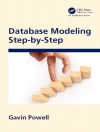This unique text/reference presents a comprehensive review of the state of the art in sparse representations, modeling and learning. The book examines both the theoretical foundations and details of algorithm implementation, highlighting the practical application of compressed sensing research in visual recognition and computer vision. Topics and features: describes sparse recovery approaches, robust and efficient sparse representation, and large-scale visual recognition; covers feature representation and learning, sparsity induced similarity, and sparse representation and learning-based classifiers; discusses low-rank matrix approximation, graphical models in compressed sensing, collaborative representation-based classification, and high-dimensional nonlinear learning; includes appendices outlining additional computer programming resources, and explaining the essential mathematics required to understand the book.
İçerik tablosu
Part I: Introduction and Fundamentals.- Introduction.- The Fundamentals of Compressed Sensing.- Part II: Sparse Representation, Modeling and Learning.- Sparse Recovery Approaches.- Robust Sparse Representation, Modeling and Learning.- Efficient Sparse Representation and Modeling.- Part III: Visual Recognition Applications.- Feature Representation and Learning.- Sparsity Induced Similarity.- Sparse Representation and Learning Based Classifiers.- Part IV: Advanced Topics.- Beyond Sparsity.- Appendix A: Mathematics.- Appendix B: Computer Programming Resources for Sparse Recovery Approaches.- Appendix C: The source Code of Sparsity Induced Similarity.- Appendix D: Derivations.
Yazar hakkında
Dr. Hong Cheng is Professor in the School of Automation Engineering, and Deputy Executive Director of the Center for Robotics at the University of Electronic Science and Technology of China. His other publications include the Springer book
Autonomous Intelligent Vehicles.












